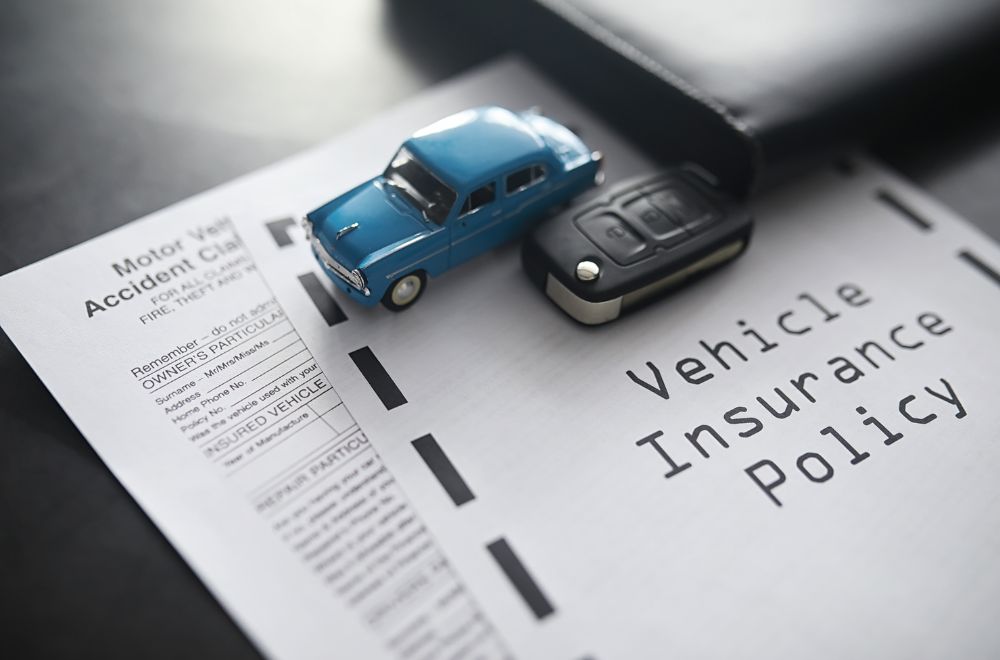The best car insurance for young drivers in California is not just the cheapest quote. California’s 2025 liability minimums, Proposition 103’s rating rules, and must-offer Uninsured/Underinsured Motorist coverage change what “best” really means. This guide shows families and new drivers how to build protection first, then lower the premium in ways that work in California. You will see practical steps for mileage, experience, and coverage choices, plus a comparison checklist you can use today.
As an independent agency, Old Harbor Insurance Services helps California families design policies that meet state rules, right-size critical coverages, and find value without cutting the protections young drivers need.
California 2025: The Rules That Define “Best”

Before you shop, know the guardrails that shape both price and protection in California.
New minimum liability limits
Since January 1, 2025, the state minimum liability is 30/60/15. That is $30,000 per person for bodily injury, $60,000 per accident for bodily injury, and $15,000 for property damage. If you previously carried 15/30/5, your renewal likely increased to meet the law.
What Proposition 103 prioritizes
California requires insurers to weight three factors most: driving safety record, annual miles driven, and years of driving experience. Other factors exist, but these three carry the most influence over your premium. Focus your savings strategy here.
Good Driver Discount basics
California’s Good Driver rules guarantee at least a 20 percent lower rate if you qualify. Eligibility requires being licensed for three years and having a clean record under the statute. Plan toward this milestone for your teen or young adult.
Coverage First, Then Price: Build a Safer Floor
Cheap without the right coverages is not “best.” Set your protection, then optimize cost.
Liability limits that fit real risk
The 2025 minimum is a legal floor, not a safety net. Families with assets often choose 50/100 or 100/300 liability. Higher limits protect against lawsuits after a serious injury or multi-car crash. The new minimums make the gap smaller but still real.
Uninsured and Underinsured Motorist (UM/UIM)
California requires insurers to offer UM/UIM. You can decline only with a signed waiver. For young drivers, UM/UIM can be the difference between full recovery and large out-of-pocket costs if the at-fault driver has little or no insurance.
Collision and Comprehensive
If you finance or lease, you will need both. Pick deductibles you can afford tomorrow, not just the ones that look inexpensive today.
Medical Payments
A small add-on that helps with injuries to you or your passengers, regardless of fault. It fills gaps for friends riding with young drivers.
Roadside and rental
Stranded students and new commuters benefit from roadside. Rental reimbursement keeps life moving during repairs after a covered claim.
The California Way to Lower Premiums, Legally
Because credit scoring is not a primary factor here, the biggest levers are miles and experience.
Miles, miles, miles
Document true annual mileage with odometer photos, service receipts, campus parking records, or commuting changes. Ask your insurer how to report mileage and when adjustments apply. California regulations define mileage as an estimated figure for the next 12 months and govern how changes are noticed.
Years of experience
Three clean years as a licensed driver unlocks Good Driver pricing. Build habits that keep violations and at-fault crashes off the record.
Driver training and grades
Many carriers filed in California still recognize driver education and good-student discounts. Ask for both during quoting and at each renewal.
Usage-based programs
Telematics programs vary by insurer and require specific filings in California. Understand what data is used, how it affects price, and whether enrollment is optional. Emphasize miles and safe driving, not quick fixes.
Accuracy matters
Do not under-report mileage or leave a household driver off the application. Misrepresentation can lead to cancellation or rescission. The savings never outweigh the risk.
Teen and New-Driver Scenarios: Pick Your Path

The right setup depends on where the young driver is in the journey.
Permit holder, no car
A permitted teen must drive with a supervising adult. Many households wait to add the teen as a rated driver until the license is issued, but practices vary by insurer. Verify rules with your carrier before practice begins.
Newly licensed, living at home
It is often cheaper to add to the family policy than to buy a standalone policy. Assign the teen to the household vehicle that makes sense for real usage. Do not “front” a parent as the primary driver of a car the teen primarily uses.
College student with low miles
When a student moves to a walkable campus or uses public transit, submit new annual mileage and confirm the change in writing. Savings come from fewer miles in California’s rating system.
New graduate, first solo policy
Start with liability and UM/UIM that match realistic risk. Add comprehensive and collision if you cannot self-pay for a loss. Re-quote at 12 months as driving history matures.
Income-eligible young adults
The California Low Cost Auto (CLCA) program provides policies that meet state requirements for qualifying drivers with modest vehicles and limited incomes. It can be a bridge toward standard markets later.
Safety and Compliance: Rules That Affect Risk and Price

The first 12 months after licensure are critical for safety and for future eligibility.
Graduated Driver Licensing highlights
Under age 18, provisional licensees may not carry passengers under 20 or drive between 11 p.m. and 5 a.m. except under narrow exceptions, unless a 25+ licensed driver is present. Violations correlate with claim activity. Keep these rules posted at home.
Why this matters for insurance
Clean experience builds toward the Good Driver Discount at three years. Families who enforce the rules often reach lower pricing sooner.
What “Best for Young Drivers” Really Means in California
Use this checklist to compare quotes the California-specific way.
Quote checklist
- Annual mileage: how the number was set, how to update it, and when changes take effect. Get it in writing.
- UM/UIM limits: offered by default. If you decline, you must sign a waiver. Understand the trade-off.
- Discounts on file: driver training, good student, multi-car, telematics or verified-mileage programs filed for California.
- Household drivers: confirm all are listed. Ask how provisional drivers are handled during the first year.
- Apples to apples: same liability and deductibles, clear fees, and a written mileage basis for the quote.
Avoid the Hidden Pitfalls
These mistakes undo savings or weaken protection.
Waiving UM/UIM without realizing it
UM/UIM must be offered. To decline or select lower limits, California requires a signed rejection on specific forms. Read before you sign.
Under-reporting miles or “fronting”
Listing a parent as the primary user for a car a teen actually drives, or lowballing mileage, can lead to policy problems and unpaid claims. Accuracy protects you.
Minimum limits that no longer fit
The new 30/60/15 minimum is stronger than before but can still leave families exposed after a major crash. Consider higher limits if you have assets to protect.
Old Harbor Builds California-Smart Auto Plans for Young Drivers
California’s rules and rating quirks are unique. Old Harbor turns them into a clear, family-friendly auto plan—built around how your young driver actually uses the car, and supported by real humans who explain every option.
How we set you up
- Listen, verify, personalize. A licensed Old Harbor agent connects after you request a quote to understand miles, commute, school schedule, and vehicle use—then tailors options instead of forcing a template.
- Right-size the foundation. We shape the core stack—liability limits, Uninsured/Underinsured Motorist, Medical Payments, and add-ons like roadside—so first-time drivers aren’t left exposed.
- Clarity before you bind. You’ll see clean, side-by-side choices with plain-English explanations; our agency ethos is to educate every client, not just price-shop.
- Ongoing tune-ups. As miles, school/work patterns, and experience change, we revisit the setup so the policy keeps pace (not just at renewal).
Benefits you feel
- Fewer surprises. Coverage is designed around California realities and explained by a team built on service and continuous learning.
- Protection where it matters. Essential young-driver protections—UM/UIM, Medical Payments, and roadside assistance—are discussed up front so you can choose confidently.
- Real help at claim time. From questions to documentation, Old Harbor’s guidance is geared to move claims forward—not leave you guessing.
If you want this handled end-to-end, start with Old Harbor’s quick quote and a licensed agent will follow up to build your California-smart plan.
Build a California Smart Policy and Drive with Confidence
The best car insurance for young drivers in California balances protection with smart, legal savings. Start with liability that fits real risk, keep UM/UIM on the policy, and build toward the Good Driver milestone with clean experience and truthful mileage. Use the comparison checklist to align quotes with California’s rules, not guesswork.
If you want a policy designed around miles, experience, and must-have protections, contact Old Harbor Insurance Services. We will compare carriers, explain your waiver options, and build a plan that grows with your young driver.
Frequently Asked Questions (FAQs)
1) Do young drivers need their own policy in California?
Often it is cheaper to add a young driver to the family policy because multi-car and other discounts apply. There are exceptions for ownership and title, but most households start by adding the new driver and revisiting once experience and pricing improve.
2) Is Uninsured/Underinsured Motorist required in California?
Insurers must offer UM/UIM. You can reject or lower it only by signing a waiver on approved forms. For young drivers, UM/UIM is valuable protection if a crash involves an uninsured or underinsured motorist. Ask to see the offer and waiver before you decide.
3) What counts most in my California rate?
California prioritizes driving record, annual miles, and years of experience. Document mileage changes, keep a clean record, and plan toward three years licensed to qualify for the Good Driver Discount. Other discounts exist, but these three factors carry the most weight.
4) Are “good student” or driver-ed discounts real in California?
Yes, many insurers filed programs that recognize driver education and good grades. Ask during quotes and renewals so the discounts are applied when you qualify. Combine them with accurate mileage reporting for the biggest impact.
5) How do provisional license rules affect insurance?
For the first 12 months, provisional drivers cannot carry passengers under 20 or drive between 11 p.m. and 5 a.m. without a 25-plus licensed adult, subject to limited exceptions. Following these rules lowers risk and helps preserve a clean record toward better pricing.

